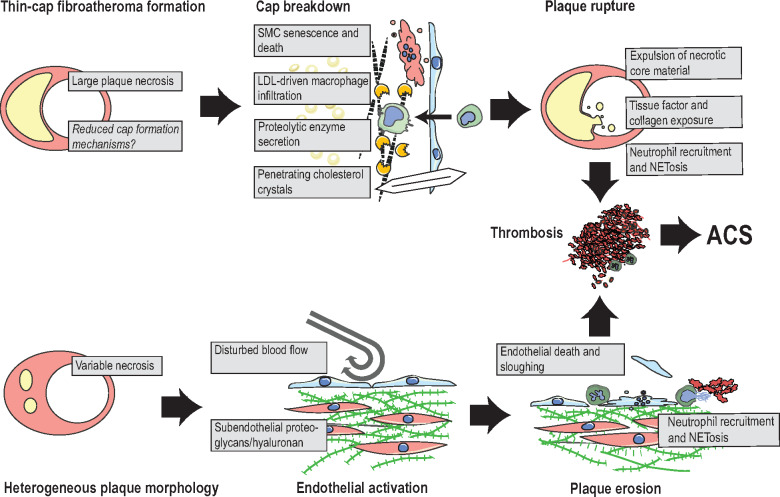Figure 5.
Proposed mechanisms of plaque rupture and plaque erosion. Rupture: lesions that develop extensive necrosis and only sparse fibrous cap tissue are at risk of plaque rupture. Suggested final processes that precipitate rupture include senescence and death of residual cap smooth muscle cells (SMC), degradation of the fibrous matrix by macrophage-secreted proteolytic enzymes, and cholesterol crystals, which may penetrate cap tissue. These processes expose the prothrombotic plaque interior and result in neutrophil-accelerated thrombosis. Erosion: lesions that are complicated by erosion typically display variable amounts of plaque necrosis, but are frequently characterized by subendothelial accumulation of proteoglycans and hyaluronan. Current hypotheses suggest that the combination of disturbed blood flow and endothelial activation by immune activators, e.g. hyaluronan fragments, leads to neutrophil recruitment with neutrophil extracellular trapsosis, endothelial cell apoptosis/sloughing, and thrombus formation. ACS, acute coronary syndrome; NETosis, cell death by neutrophil extracellular traps.

